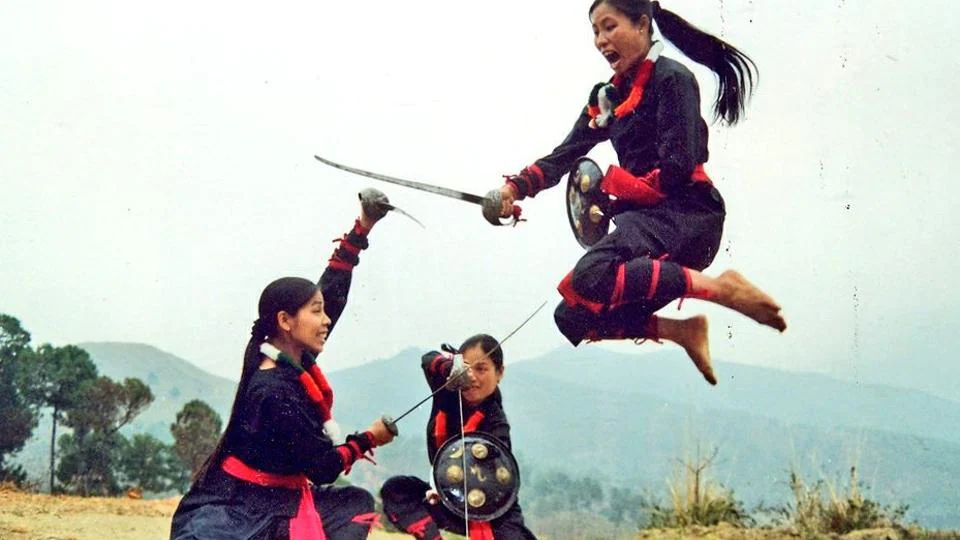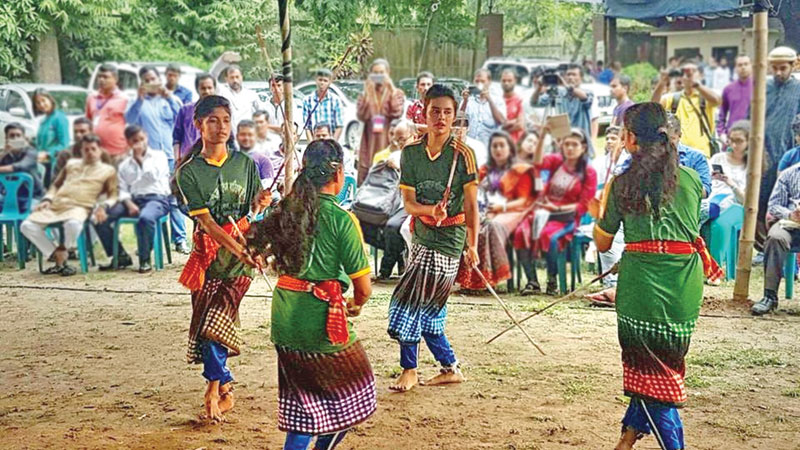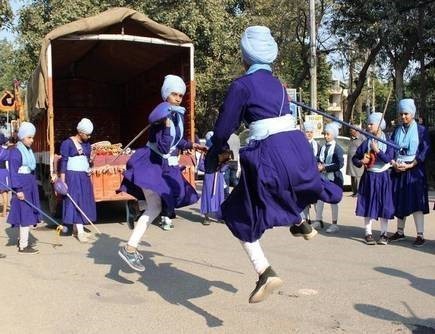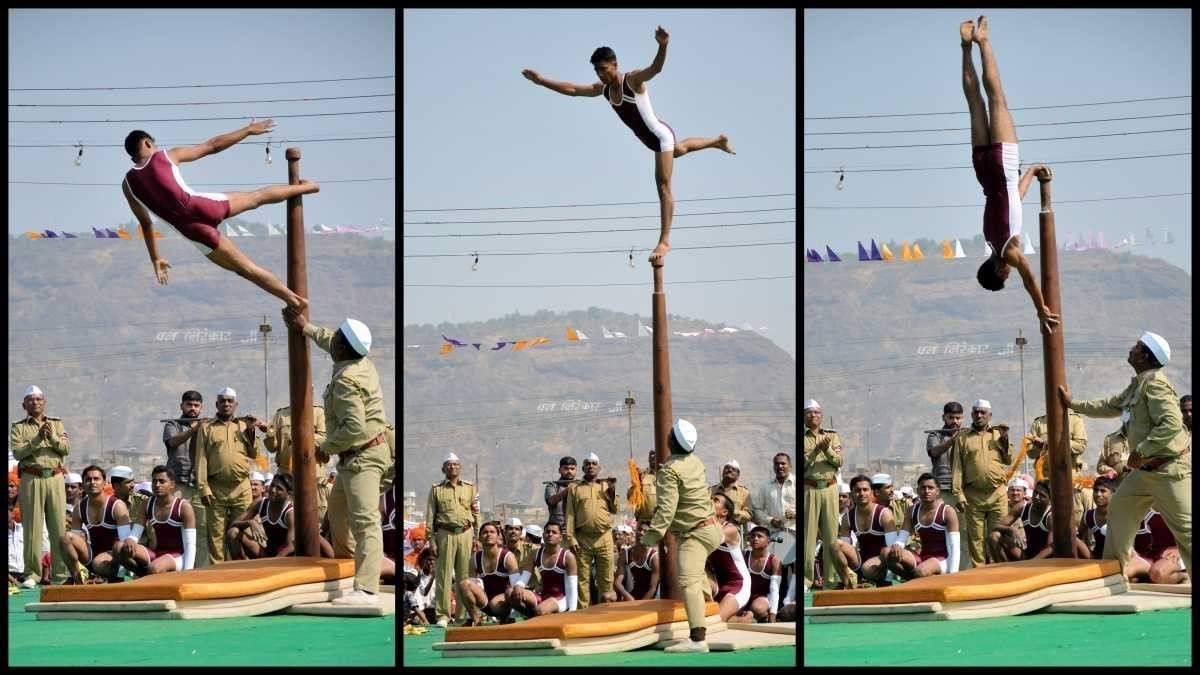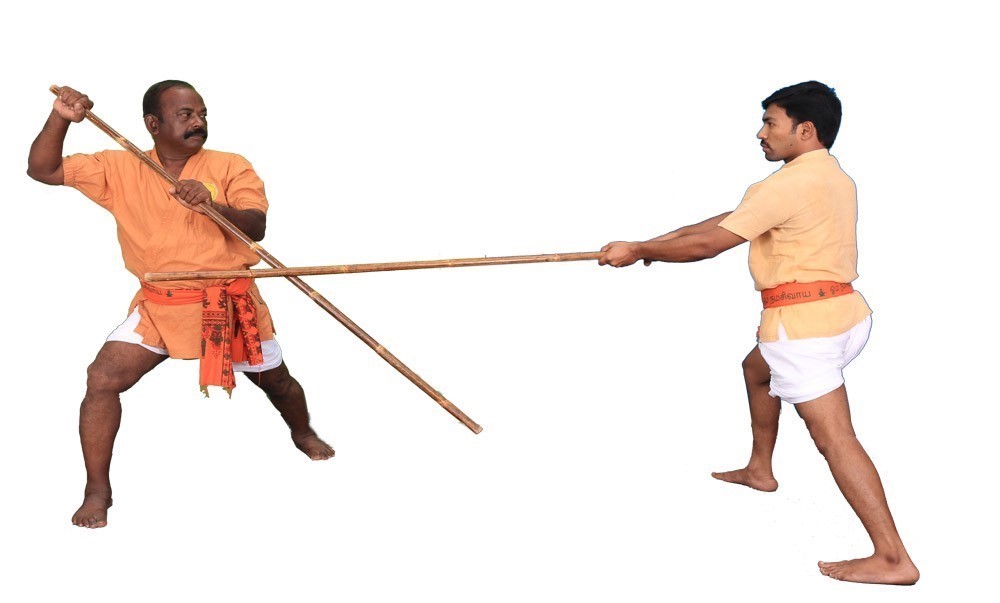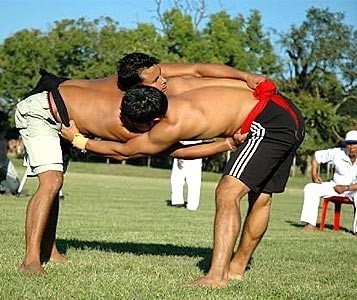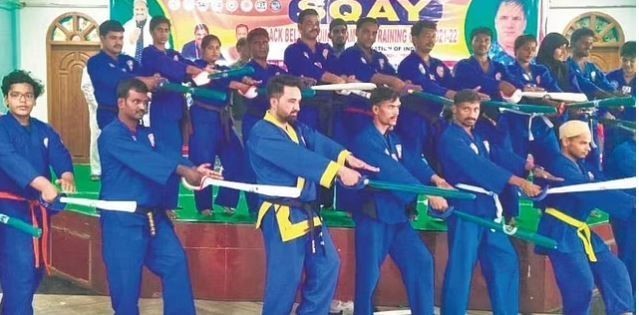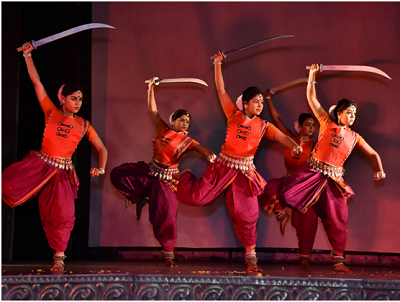Indian Heritage & Culture
Martial Art forms in India
- 13 Jun 2022
- 7 min read
For Prelims: Martial arts in India
For Mains: Indian Heritage and Culture
Why in News?
Recently, in Kashmir, a maulvi stepped in to save thang-ta, a martial law practice.Thang Ta is a martial art technique highly prevalent in the state of Manipur.
What are the Various Martial Art Forms in India?
- Thang Ta – Manipur:
- Huyen langlon is an Indian martial art from Manipur.
- In the Meitei language, huyen means war while langlon or langlong can mean net, knowledge or art.
- Huyen langlon consists of two main components:
- Thang-ta (armed combat)
- Sarit Sarak (unarmed fighting).
- The primary weapons of huyen langlon are the thang (sword) and ta (spear). Other weapons include the shield and the axe.
- Lathi Khela – West Bengal:
- Lathi is a wooden weapon to fight and is an ancient weapon used in martial arts in India.
- Lathi or stick are used in martial arts in the state of Punjab and Bengal.
- Lathi is also popular for its utility in sports specially in the Indian villages.
- A practitioner is known as lathial.
- Gatka – Punjab:
- Gatka is a traditional martial art form associated with the Sikh gurus.
- It imbibes sword and sticks fighting skills and self-control.
- Gatka is believed to have originated when the 6th Sikh Guru Hargobind adopted ‘Kirpan’ for self-defense during the Mughal era.
- A style of stick fighting between two or more practitioners, Gatka is a toned-down version of the deadlier Shastar Vidya. The sharp swords of Shastar Vidya have been replaced by wooden sticks (soti) and shields in Gatka.
- It is considered as a battle technique.
- 10th Guru Gobind Singh made it compulsory for everyone to use the weapons for self-defense.
- It was earlier confined to gurudwaras, nagar kirtans and akharas, but now it finds presence in the sports category after the formation of the Gatka Federation of India (GFI) in 2008.
- Today, it is used to showcase self-defense and fighting skills and is open to people of all faiths and communities.
- Kalaripayattu – Kerala
- Kalaripayattu is a martial art based on the ancient knowledge of the human body.
- It originated in Kerala during 3rd century BC to the 2nd century AD. It is now practiced in Kerala and in some parts of Tamil Nadu.
- The place where this martial art is practiced is called a 'Kalari'. It is a Malayalam word that signifies a kind of gymnasium. Kalari literally means 'threshing floor' or 'battlefield'. The word Kalari first appears in the Tamil Sangam literature to describe both a battlefield and combat arena.
- It is considered to be one of the oldest fighting systems in existence.
- It is also considered as the father of modern Kung - Fu.
- Mallakhamb- Madhya Pradesh
- Mallakhamb is a traditional sport, originating from the Indian subcontinent, in which a gymnast performs aerial yoga or gymnastic postures and wrestling grips with a vertical stationary or hanging wooden pole, cane, or rope.
- The name Mallakhamb derives from the terms malla, meaning wrestler, and khamb, which means a pole. Literally meaning "wrestling pole", the term refers to a traditional training implement used by wrestlers.
- Madhya Pradesh and Maharashtra have been the hotspots of this sport.
- Silambam – Tamil Nadu:
- Silambam is a martial art which allows the use of weapons. It is very famous in Tamil Nadu.
- In silambam, a broad range of weapons are utilized.
- Silambam art incorporates animal motions such as snake, tiger, and eagle forms. Use of footworks is a very prominent characteristic of these art forms.
- Lord Muruga (son of Lord Shiva, also known as Kartekeya) and sage Agasthya created this martial art style.
- Musti Yuddha- Varanasi:
- It is basically an unarmed technique of fighting.
- This technique of the martial art basically belongs to the city of Varanasi in Uttar Pradesh.
- In this martial art the use of punches, kicks, knees and elbows are very prominent.
- It teaches how to protect himself without the use of arms and ammunition.
- This technique of the martial art needs complete physical and mental coordination.
- Kathi Samu – Andhra Pradesh:
- Kathi Samu is a very famous ancient martial art from Andhra Pradesh.
- Use of various kinds of sword is very prevalent in this technique of the martial art.
- 'Garidi' is the name given to the location where Kathi Samu is performed.
- In Kothi Samu, the stick fight known as 'vairi' plays a significant part as a precursor to the real sword fight.
- Other essential components of sword skills include 'Gareja,' in which a person holds four swords, two in each hand.
- Sqay – Kashmir:
- Sqay is a martial art that belongs to Kashmir.
- It is a kind of sword-fighting.
- A curved single-edged sword and a shield are used by armed sqay.
- Armed sqay can use one sword in each hand.
- Kicks, punches, locks, and chops are examples of unarmed tactics.
- Various approaches are used by Sqay. Techniques and lessons in both freehand and sword for single and double swords.
- Paikha Akhadha – Odisha:
- Paikha akhada, also known as paika akhara, is an Odia name for "warrior scholl."
- It was used as a peasant militia training school in Odisha.
- It is used to do conventional physical activities.
- Rhythmic gestures and weapons swung in synchronization to the beat of the drum are used in this performance art.



